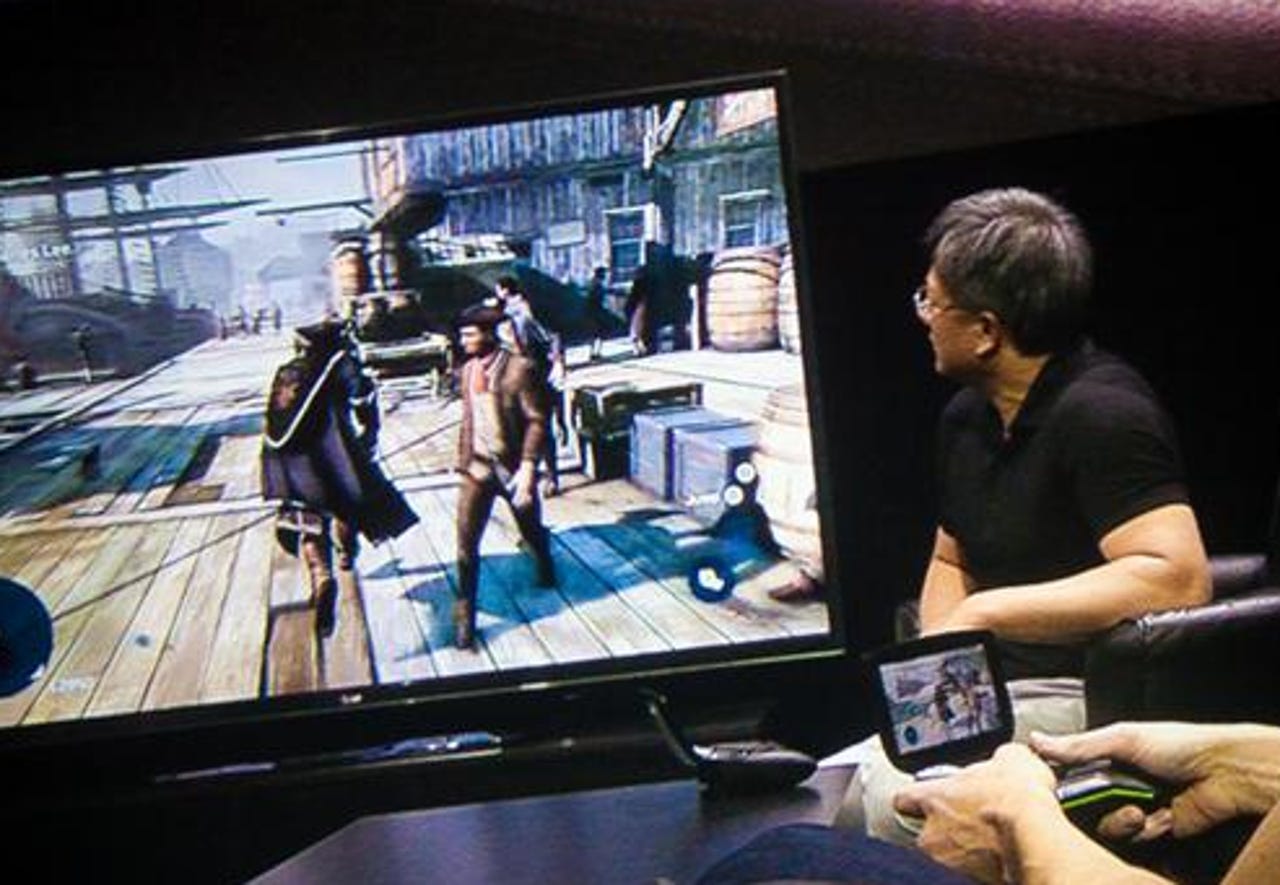Nvidia lifts the lid on Project Shield

Nvidia's Project Shield was unveiled at the Consumer Electronics Show (CES) several weeks ago--and now the chipmaker has offered insight into what it took to make sure the portable gaming device was ready in time.

The chipmaker's gaming device, Nvidia Shield, comes with a quad-core Tegra 4 processor, offers between five and 10 hours of gameplay, and is smaller than a Wii U controller. Able to connect to the cloud in order for a user to access Android and TegraZone games--as well as PC games with compatible GeForce graphics cards--once it hits the market, Shield will potentially allow users to access thousands of game titles.
Still currently a prototype, the Android-based gaming device heralds a shift from Nvidia from purely processors to consumer hardware--a process detailed within a post on Nvidia's blog.
According to Nvidia, the first prototype was assembled in 2012, which was no more than a "game controller fastened to a smartphone with wood." Based on this, Nvidia's in-house team refined and fashioned the small controller before installing the processors and Android software.
It was important to make Shield stand out from the crowd, and so the open Android platform seemed the best bet to keep the gaming ecosystem from becoming restrictive, and give it the capability to play thousands of titles. One engineer commented:
The challenge in the past--with the old model consoles--is software; but thanks to Android we didn't have to come at it trying to build a walled-garden ecosystem.
However, according to the chipmaker, the secretive project was hampered by a lack of time. In order to announce the device at CES, engineering teams were flown in from Texas and China to try to keep the project--ran by Andrew Bell--on schedule.
In a cloak-and-dagger setup, parts for Shield were hand delivered from partners in Austria, Taiwan, and China.
By December, two prototypes were complete, "painful" flaws notwithstanding. With 19 days remaining, the team began living on a diet of fried chicken and pressure; testing the Tegra 4 mobile processor, soldering, and working long hours to try to finish a product that would wow the audience at CES.
They managed it, of course, and hopefully it won't be too long before we can have a play on some of the units. Take a look at the blog post for the full story.